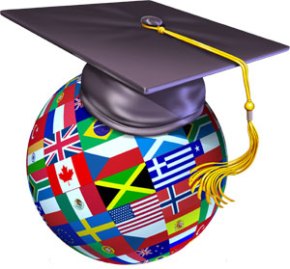My Thoughts on Improving Education in Cambodia
The tragedy of the Khmer Rouge regime (1975-1979) left the Cambodian education in ruins. There is a lot to be done to improve the education system in Cambodia. One day I had a discussion with my friend Gareth Mace who said, “Cambodia needs to establish a good school structure and from there she can expand the structure to all over the country.” I do agree with his idea and I think the government has to have a good plan and work closely with the NGOs to improve education in Cambodia.
One of the NGOs working to improve the education system in Cambodia is “ Caring for Cambodia” (CFC), which has worked to support public schools in the Siem Reap region. Although the “success” of their school model has not been measured yet, some changes are visible such as libraries with thousand books, beautiful classrooms, qualify teachers who receive professional training, and free lunches that are available for all students and teachers. As such, we could assume that CFC schools are better than other government schools that rely on very limited resources. In addition, the dropout rate at CFC schools is 1.70% compared to the national average of 8.70% and student retention rate is 93.82% compared with the national average of 61.20% (CFC newsletter, 2011-2012).
CFC is working continuously to improve the curriculum, teacher quality, as well as school management. For example, CFC provides support for the school structure and management by appointing a qualified Cambodian as a country director. CFC has also established a partnership with professional groups in Singapore to work on curriculum development. A teacher training director was appointed to ensure the improvement of the quality of the teachers. Teacher training includes a study tour to Singapore, teacher training by international teachers, in-house trainings, and workshops. The teacher mentor program was established in order to provide ongoing support for teachers in the classroom and to sustain the capacity building of the teachers.
Furthermore, CFC is providing volunteer opportunities for individuals and institutions around the globe. The volunteering is included in the Education Committee and School Liaison Committee. The Education Committee was set up in Singapore and is responsible for holding the workshops and supporting the Cambodian teachers, as well as developing teaching materials for the Cambodian classrooms. The Education Committee members sometime travel to Siem Reap to provide training for CFC teachers. I think that these strategies provide a great human resource for CFC to support their teachers without much cost. The School Liaison Committee is responsible for building a network between CFC and school communities from around the world. The school committee is also responsible for promoting CFC, school tour and fundraising, supply drive, mobilize the resources for CFC, and communication. The School Liaison Committee provides a great support to CFC by addressing the needs of human resources and other resources.
My thoughts regarding the education development plan for Cambodian schools is that CFC could engage and network with other public school in other provinces. The CFC school model – for example the teacher training model, curriculum model, and school management model – should be considered for wider dissemination in other public schools. CFC could also facilitate more internship in other schools. Many of the NGOs that have been supporting Cambodian schools should be cooperated with CFC in order to support to the whole educational system in other public schools in Cambodia. There are many areas in which this collective approach would be beneficial, including networking, partnership, curriculum development, teacher training, school materials, library development, learning technology, data management systems and research programs. More importantly there should be a central board that would monitor each components of the education development, for example curriculum development board, teacher training board, or school management board. The central board should provide guideline to the NGOs and manage their work based on the needs of each individual school. These NGOs should be working together closely and collaboratively to establish a good educational structure such as CFC schools.

That good idea I think
Pingback: Elevating Education for Cambodia’s Growth | Living in Phnom Penh
such a good idea, I have been supporting school when I was attending when I was young since 2014, I actually provide prices for students who study hard and also support students study fee. little but helps I believe.
Vathana
Yes i think that was a good idea to provide the prices for the students who studied hard. However the majority of the teacher did not do that 🙂
What is the most effective way to start with in order to improve education? It has been 2 years since I have started supporting education in Cambodia. I definitely need more ideas – down here is what I am going to do in 2017.
Bicycles for the top students
Citizenship prize
Books for library
Students tuition fee
English Club tutor
Biology ( year 7,8,&9)
Physics ( year 7,8,&9)
Chemistry ( year 7,8,&9)
Mathematics ( year 7,8,&9)
Morality ( year 7,8,&9)
Biology ( year 10,11,&12)
Physics ( year 10,11,&12)
Chemistry ( year 10,11,&12)
Mathematics ( year 10,11,&12)
Morality ( year 10,11,&12)
“Top Physics student of the country”
My facebook is pen vathana.
Please add me so that we can talk more about helping our nation.